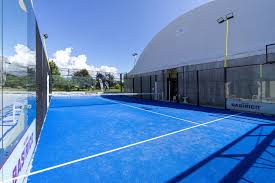

Equipment Needed for Squash
Squash is a fast-paced and exhilarating racquet sport that’s played indoors, and it requires specific equipment to fully enjoy and excel in the game. Whether you are a beginner or an experienced player, having the right gear is essential for performance, safety, and overall enjoyment. Here’s a detailed look at the key equipment needed for squash.
The most critical piece of equipment in squash is the racquet. Squash racquets are typically made from lightweight materials such as carbon fiber or composite materials, allowing players to maneuver quickly and adjust their shots effectively. When choosing a racquet, players should consider their playing style. For beginners, a wider string bed provides a larger sweet spot and offers forgiveness for off-center hits. As players advance, they may prefer lighter racquets for increased speed and control. Brands like Prince, Dunlop, and Head offer a variety of options suitable for all levels.
2. Squash Balls
Squash balls are another vital component of the game. There are various types of squash balls, including yellow dot (competition), blue dot (intermediate), and red dot (beginners). Each ball features different bounce characteristics, so it's important to select the right one based on your skill level. Beginners should start with the red dot ball, which bounces higher and allows for a slower-paced game to develop skills before progressing to the blue and yellow dot balls.
3. Footwear
Proper footwear is crucial for playing squash, as the sport demands quick lateral movements and sudden stops. Squash-specific shoes offer the best support, grip, and stability. They usually have a gum rubber sole designed to provide excellent traction on the court surface while minimizing the risk of slipping. When selecting shoes, look for those that offer sufficient cushioning and support to protect against injuries.

4. Apparel
Choosing the right apparel is equally important for comfort and performance during matches. Players should wear breathable, moisture-wicking clothing that allows for free movement. Light, fitted shorts or skirts, along with lightweight t-shirts, are popular choices. Many players opt for specific squash jerseys that provide flexibility and a comfortable fit while playing. Additionally, wearing moisture-wicking socks can help keep your feet dry and prevent blisters.
5. Protective Gear
Though squash is generally a safe sport, protective gear can help minimize the risks of injury, particularly to the eyes. Using protective eyewear is highly recommended, especially for beginners who are still getting used to the game's pace and coordination. There are various models available, designed specifically for squash, which provide adequate eye protection without obstructing vision.
6. Water Bottle and Towel
Staying hydrated is crucial in squash, given the intensity of the game. It’s advisable to carry a water bottle to sip on during breaks. A towel is also beneficial to wipe off sweat and maintain grip on the racquet, especially during long matches.
Conclusion
Equipping yourself with the right gear is fundamental to enjoying and succeeding in squash. From selecting the appropriate racquet and ball to ensuring you have the right footwear and apparel, every piece of equipment contributes to your performance and overall experience. With the right preparation, you can dive into the sport with confidence and enthusiasm. Whether playing casually or competitively, having the right equipment will enhance your enjoyment of this dynamic and engaging game.
Premium Paddle Tennis Rackets for Every Court & Player
Premium Padel Courts: Expert Design & Installation Services
Premium Padel Courts: Panoramic Designs & Custom Builds
Premium Padel Court | Custom Designs & Quality Installation
Paddle Tennis Rackets: Unleash Power & Precision on Court
Best Paddle Tennis Rackets: Power, Control & Comfort